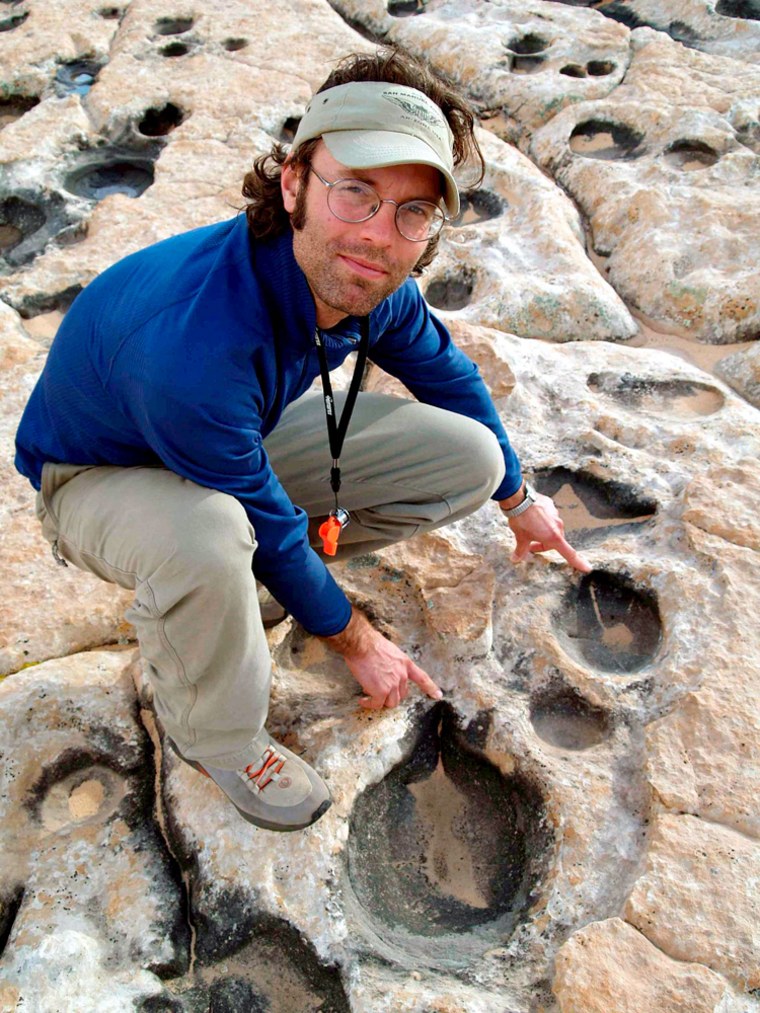So maybe there was no dinosaur dancing after all.
Paleontologists say there are no signs of dinosaur tracks at a remote spot along the Utah-Arizona border that was previously described by University of Utah geologists as a "dinosaur dance floor" for its density of tracks.
"We didn't observe a single footprint," said Andrew Milner, paleontologist at the St. George Dinosaur Discovery Site at Johnson Farm in southwestern Utah.
He was one of four paleontologists who hiked into the area last week after a heavily publicized study claiming there were more than 1,000 previously unknown dinosaur tracks crammed onto less than an acre in the Arizona portion of Vermillion Cliffs National Monument.
"We went up there optimistic, really hoping we were going to find footprints," Milner said Friday.
They quickly determined there were none. Instead, it was a dense collection of potholes caused by erosion in the sandstone, they said.
And the supposed tail-drag marks in the rock? Probably another result of erosion, the paleontologists said.
Marjorie Chan, a University of Utah researcher who co-authored the "dinosaur dance floor" study, said she's open to the paleontologists' views and says she'll team up with other researchers for another examination of the site.
"I'm interested in the truth, no matter what the outcome is," Chan said.
